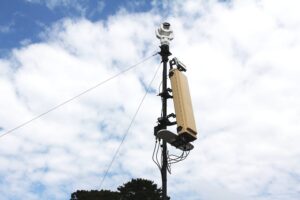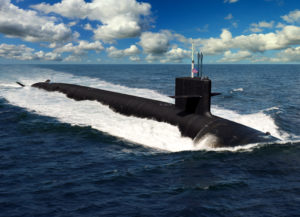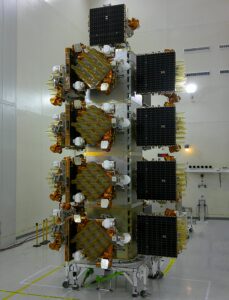
By Jim Will, Defense Opinion Writer.
The lack of U.S. manufacturing for flat panel displays (FPDs) and the subsequent reliance on Chinese sources present significant, potentially catastrophic risks to the U.S. military, economy and infrastructure.
To establish commercially viable domestic capabilities quickly, government and industry must create a framework to generate sustainable demand and eliminate barriers that could keep manufacturers from entering the market.
Countless defense applications rely on FPDs. This includes advanced weapons that fire missiles for offensive and defensive battlefield tactics and aircraft, ships, combat vehicles, command and control centers and warfighter communications. Today, more than 90 percent of military systems rely on FPDs that use liquid crystal displays (LCDs). According to the House Select Committee on Strategic Competition between the United States and Chinese Communist Party, China dominates the U.S. LCD supply chain.
Outside of defense, FPDs are used heavily in our nation’s infrastructure and the commercial sector. Transportation systems, airports, banks, manufacturing facilities, medical facilities, energy providers, communications systems and more rely almost entirely on products manufactured wholly or in part in China.
Extreme supply chain risk
This dependence gives rise to extreme supply chain risk and strategic vulnerability. Whether increasing prices or denying access to new products or repair components, China can hold the U.S. military, economy and infrastructure hostage should it decide to squeeze the supply chain. In a worst-case scenario, the U.S. military could be destabilized along with the financial system, mass transit, energy production, manufacturing and communications networks.
Breaking China’s stronghold will not be easy.
Currently, there is insufficient demand for domestically manufactured commercial alternatives to entice U.S. companies to invest in the infrastructure needed to manufacture displays or their components for both defense and commercial applications. Due to the competition from China, the return on investment does not make for reasonable business case.
Price competition is also steep, as the Chinese government subsidizes manufacturing to undercut global prices and secure disproportionate market share. A Department of Defense (DoD) effort to stand up display manufacturing capabilities some 30 years ago failed because there was not a viable commercial model addressing both demand and pricing.
A plan of action to address the risk
Generating strong demand for domestically produced products that inevitably will cost more than their Chinese competitors requires government action.
The first step is having political leaders create policies and acquisition requirements that compel any supplier critical to the national infrastructure to use trusted sources for the displays in their products. The government has already identified 16 critical infrastructure sectors that are considered so vital to the U.S. that their incapacitation or destruction would have a debilitating effect.
To enable this policy, a coalition of government and industry stakeholders must develop assurance standards that establish trusted sourcing requirements. These standards need to be practical, straightforward and broadly accepted by industry.
The demand signal can be amplified further by having the government aggregate its purchases of FPDs. The production of dual-use products, which are considered valuable to both defense and commercial customers, also will expand the market for domestic displays.
A second critical success factor for bolstering domestic production is government funding to help offset the investment risks taken by U.S. manufacturers. Such funding would cover not only the brick-and-mortar investments required for production facilities but also the acquisition of the technical knowledge needed to produce FPDs.
The initial funding should go to companies that already have transferable capabilities. These companies would serve as demonstrators, providing insight into the challenges and opportunities of reshoring FPD production. Early indications are that the U.S. could stand up initial domestic LCD production to address the Department of Defense’s immediate needs in one to two years using these existing capabilities, some of which are eroding or disappearing completely.
A pipeline of engineering, production talent is critical
Another critical success factor for domestic production, and perhaps the most difficult barrier to overcome, is ensuring a strong pipeline of engineering and production talent. The U.S. is currently facing a significant workforce shortage, with Bureau of Labor Statistics data showing more than 410,000 manufacturing positions unfilled as of this past May.
The higher skill level required for FPD production and the ongoing war for talent in the fields of science, technology, engineering and mathematics (STEM) compound the situation.
The U.S. currently lacks a national workforce development strategy. But successful regional initiatives could serve as models for a federal program that develops the skills necessary to manufacture FPDs.
Developing domestic production of these products is critical to our national and economic security. Given the significant instability in the industry and a growing dependency on China, government and industry must work together to create sustainable domestic demand, support companies with transferable capabilities and expand the talent pipeline to create trusted and assured sources for FPDs.
Jim Will is executive director of the U.S. Partnership for Assured Electronics.

Are you a Defense Daily reader with a thought-provoking opinion on a defense issue? We want to hear from you.
- We welcome submissions of opinion articles on national security, defense spending, weapons systems and related areas.
- We welcome submissions from lawmakers, administration officials, industry representatives, military officials, academics, think tank experts, congressional candidates, international experts and others on issues important to the national defense community.
- We welcome a diverse range of opinions all along the political spectrum.
- Email: editor@DefenseOpinion.com













